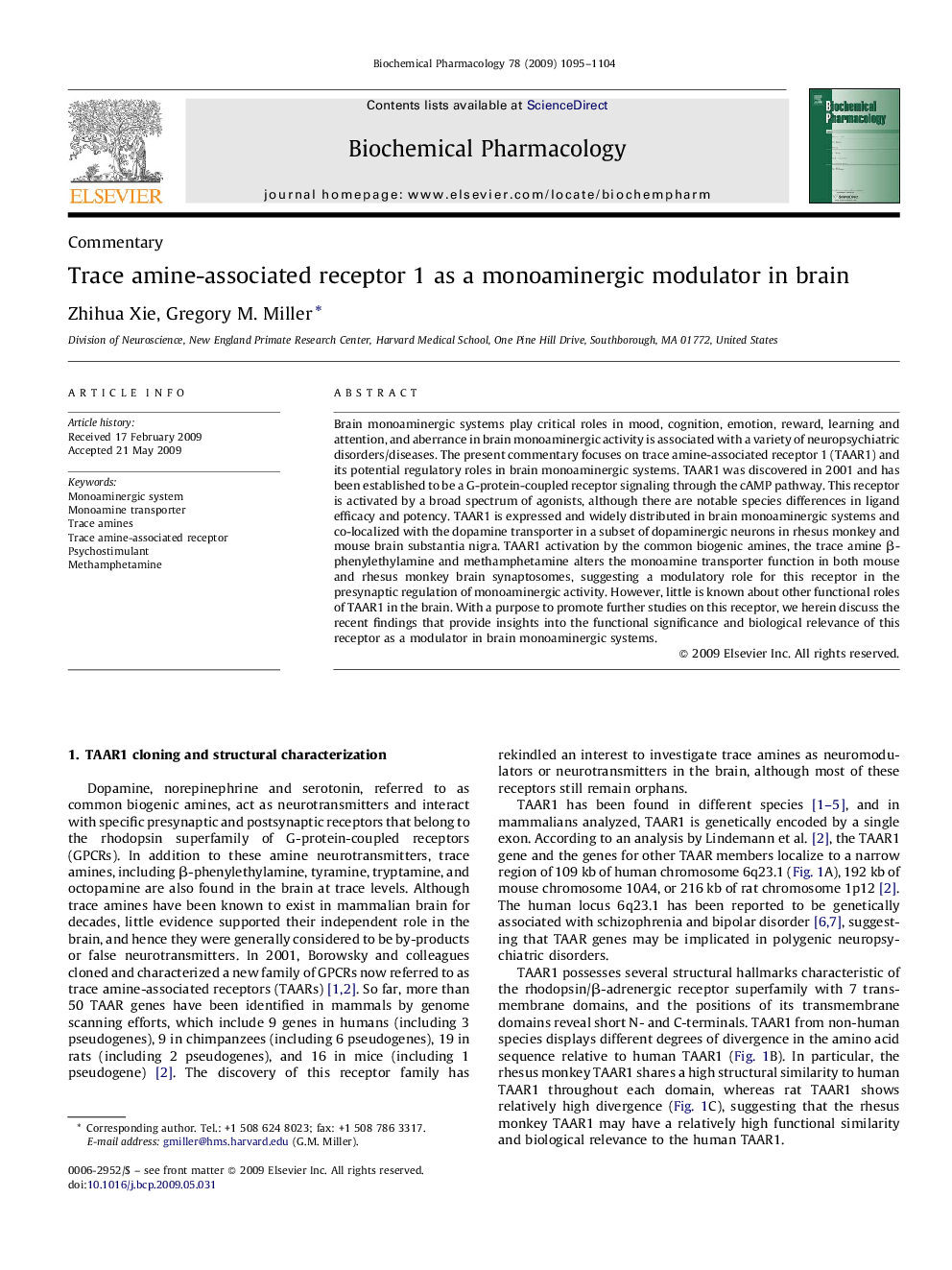| Article ID | Journal | Published Year | Pages | File Type |
|---|---|---|---|---|
| 2513939 | Biochemical Pharmacology | 2009 | 10 Pages |
Brain monoaminergic systems play critical roles in mood, cognition, emotion, reward, learning and attention, and aberrance in brain monoaminergic activity is associated with a variety of neuropsychiatric disorders/diseases. The present commentary focuses on trace amine-associated receptor 1 (TAAR1) and its potential regulatory roles in brain monoaminergic systems. TAAR1 was discovered in 2001 and has been established to be a G-protein-coupled receptor signaling through the cAMP pathway. This receptor is activated by a broad spectrum of agonists, although there are notable species differences in ligand efficacy and potency. TAAR1 is expressed and widely distributed in brain monoaminergic systems and co-localized with the dopamine transporter in a subset of dopaminergic neurons in rhesus monkey and mouse brain substantia nigra. TAAR1 activation by the common biogenic amines, the trace amine β-phenylethylamine and methamphetamine alters the monoamine transporter function in both mouse and rhesus monkey brain synaptosomes, suggesting a modulatory role for this receptor in the presynaptic regulation of monoaminergic activity. However, little is known about other functional roles of TAAR1 in the brain. With a purpose to promote further studies on this receptor, we herein discuss the recent findings that provide insights into the functional significance and biological relevance of this receptor as a modulator in brain monoaminergic systems.
Graphical abstractFigure optionsDownload full-size imageDownload as PowerPoint slide
